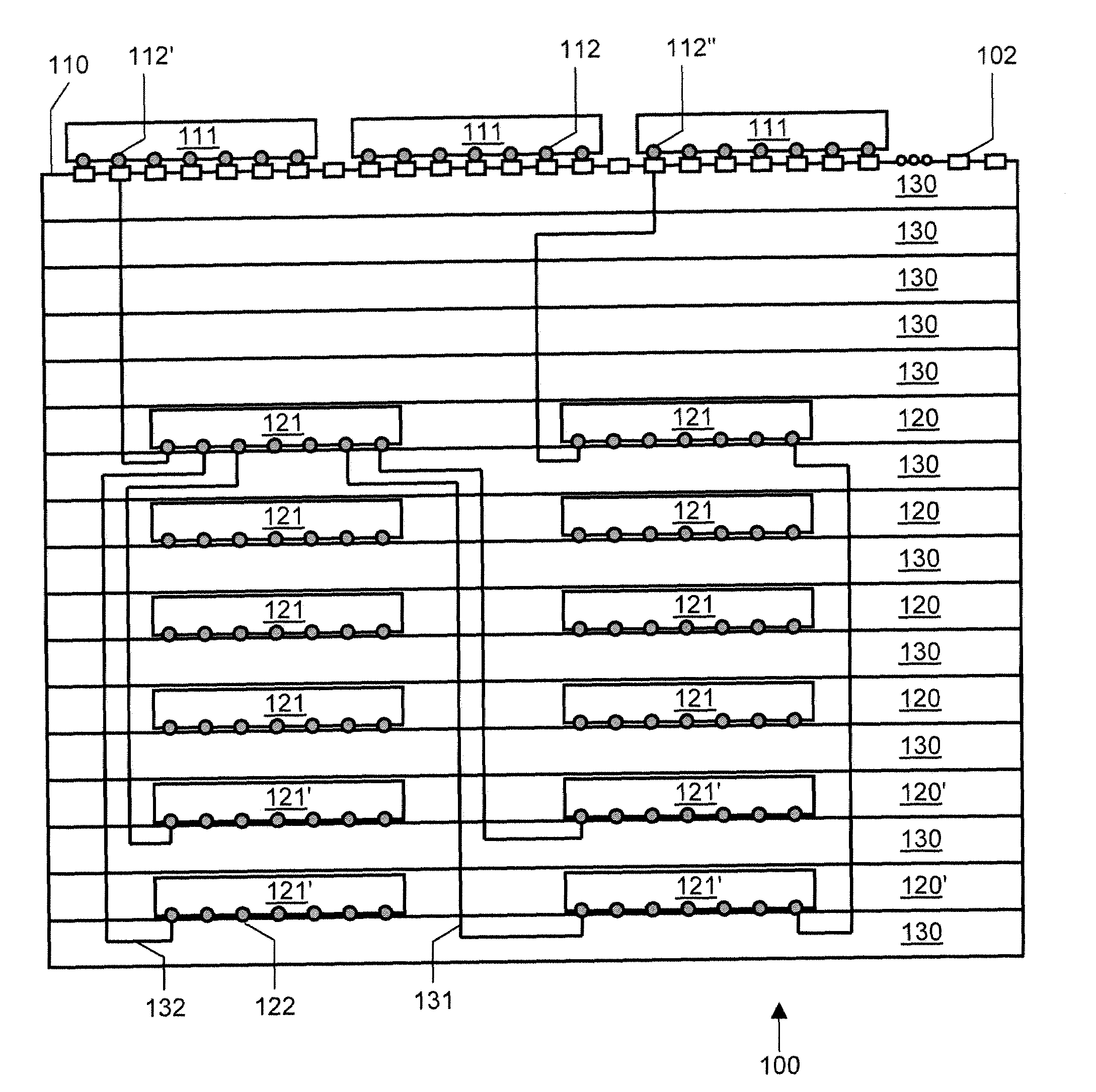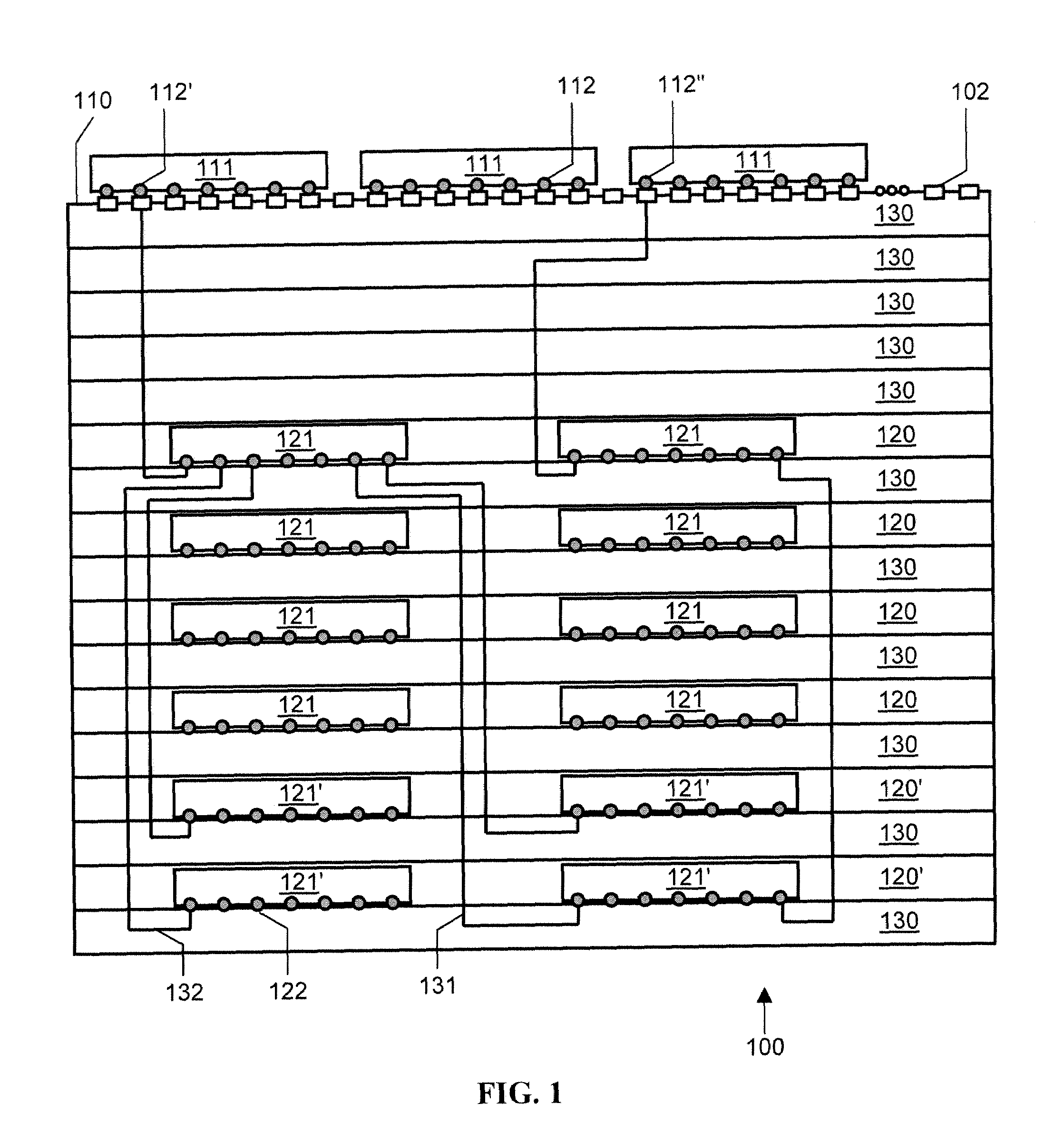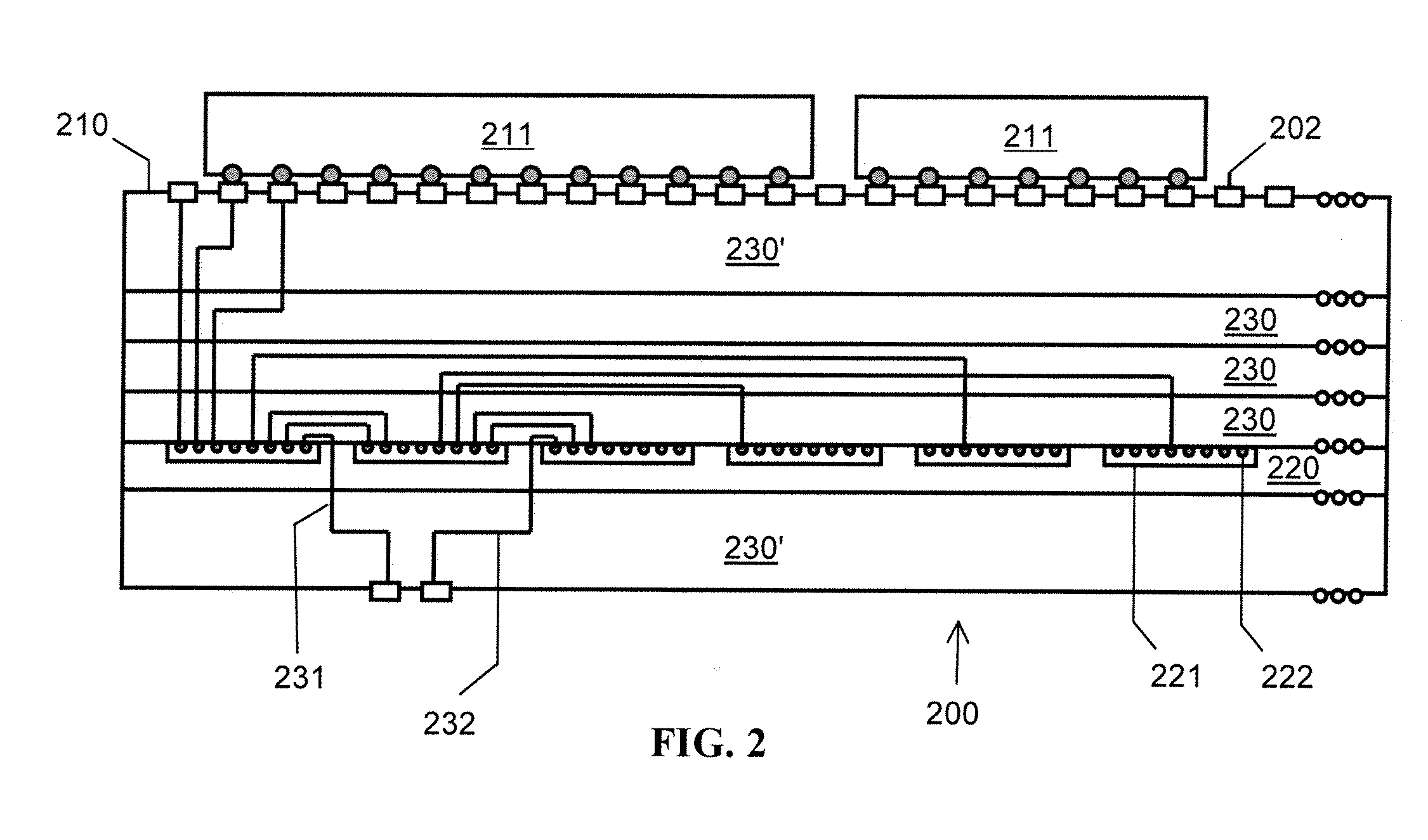Even within the area of a reticle image, a
leading edge lithography process will average several defects by the time all of the
layers are completed.
Since chips the size of a reticle image would thus be very likely to contain at least one defect, the yield of chips this size would be very low.
Memory chips are the most repetitive common chips, and they also have vast arrays of very fine features which make them quite vulnerable to defects; therefore most commercial memory chips contain enough defect tolerance to get acceptable yields at areas of one to two square centimeters, which is still significantly less than the size of a reticle.
Logic chips are harder to apply defect tolerance to because they are typically much less repetitive than memory chips.
First, as discussed above, some systems contain too much non-repetitive logic to make defect tolerance practical.
Second, most systems contain numerous commercially available chips as well as custom circuitry.
Even if one were to accept the technical challenge of replicating those commercial chips in a
wafer-scale system, one would still face
intellectual property issues in manufacturing them.
While connections between circuits within a
chip are on a
micron scale, interconnecting circuits on separate chips typically uses a circuit board with
millimeter-scale connections, requiring a bulky chip
package to connect the chip to the circuit board.
Driving these
millimeter or larger scale connections also requires more power, and thus larger drive circuitry, especially since the long interconnections are driven in
one shot and can suffer from interference caused by other signals.
Thus while a chip one
centimeter square can easily have many tens of thousands of connections from one half to its other half, it will typically be limited to a few hundred or at most a thousand connections to other chips.
However high-end MCMs cost even more to design and prototype than high-end circuit boards do.
However each PCB was now designed and fabricated for a specific task, and while this was simple for simple PCBs, high-performance systems pushed the speed and density of interconnections to the limit, raising the cost of designing each layer and the number of conductive
layers needed.
This required a “stack-up’ of many carefully aligned
layers of insulator and
copper, greatly increasing the time and cost required to produce the PCB.
However the
limited capacity of FPICs required
multiple stages of these chips for high-end circuit boards, and for full
interconnectivity, each stage of FPIC requires as many FPIC contacts as the original system chip contacts that they are interconnecting.
To achieve a high degree of
connectivity thus requires several times more area in FPICs than in the chips of the target system, greatly limiting the density of the system chips.
While this in not particularly difficult for automated pick-and-place machines during a batch of thousands of identical boards, it is inefficient for one or a few prototypes because it requires the development of a ‘pick-and-place’ program for typically a dozen or more chips and up to several hundred tiny discrete components (with most of these discrete components required for
signal integrity).
Since FPIC-based boards are already the most limited in
connectivity of the modern prototyping boards, this is a high cost.
For a signal near its maximum
noise threshold or near its minimum
voltage swing as it leaves a chip, the distance to the test connector or to the FPIC on the way to the test connector may contribute enough extra
noise or enough extra attenuation that the signal at the
logic analyzer is unreliable.
Because of the possibility of defects within a component and the cost of detecting and locating a defect once a component is installed in a system, and the further cost of replacing defective components if they are non-releasably attached in a system, components are generally tested before they are used.
While testing packaged components is relatively simple, early testing and discarding of defective components saves packaging costs and opens up the possibility of bulk testing.
However additional less-obvious defects may still exist in any component and these typically manifest themselves only after a prolonged ‘burn-in’ period where the features of the component are thoroughly exercised.
These defects include thin spots in wiring that get hotter and thinner over time until they blow like a fuse, and the opposite, where current leaking through an insulator breaks down that insulator, allowing more and more current to flow.
In addition, at the
leading edge where the packing of internal features pushes the limits, subtle interactions between signals can produce
signal integrity problems that only manifest themselves under extremely specific sets of circumstances, typically including running the circuit at its maximum speed.
Full-wafer at-speed burn-in testing is also known in the art, but it requires a far more complex adapter for each type of component to be tested.
Thus an extremely complex
test fixture is necessary merely to make to connections to a wafer full of contacts, and a customized fixture is required for each component's contact pattern.
Carrying all of the outputs from the components through the test jig and back to the tester is far more difficult, as the outputs cannot be assumed to be identical (or there would be no point in testing each component).
However for more complex at-speed testing, to connect the wide address, data and other signal busses of all the chips on a wafer would exceed the capacity of the circuitry attached to a
probe card, even with arranging such circuitry out of the plane of the card as taught in U.S. Pat. No. 6,853,206.
Furthermore, adding numerous extra chips to a
probe card drives up the cost of the card.
 Login to View More
Login to View More 


